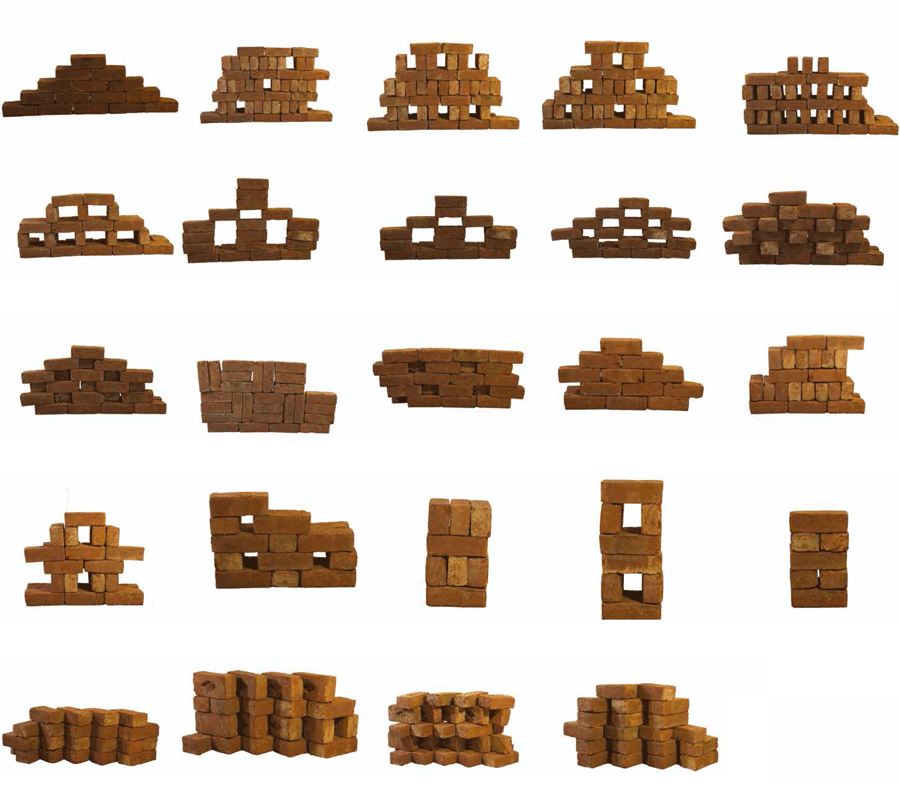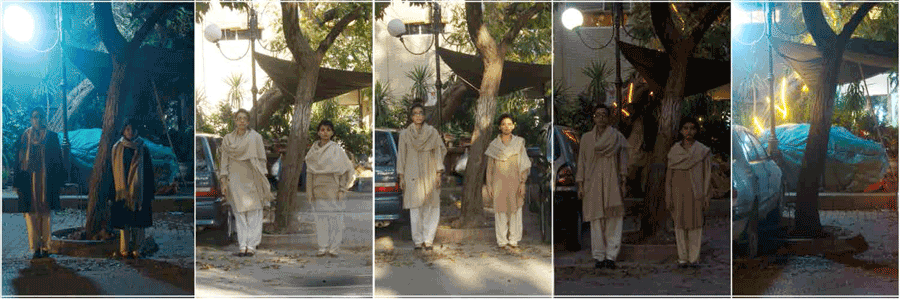Double Act
By Nusrat Khawaja | Arts & Culture | Published 6 years ago
Hurmat ul Ain and Rabbya Naseer are multi-disciplinary artists from Lahore who, besides working independently, have been creating collaborative art for over 11 years. The art produced by their collaboration is a manifestation of a dialogue, of a process that unifies the artistic double act into works of art that do not reveal their dual parentage.
A sample of their collaborative work was on show at Koel Gallery under the title, Distance Between Us. The show was curated by Naazish Ata-ullah.
The artists had installed green curtain panels across the width of the first hall of the gallery. The colour went from dark to light green. It was only by going through this soft partition that the rest of the artwork became accessible.
The idea of partition and division – which are applicable (somewhat metaphorically) to the country itself – were oblique suggestions that acquired tangible form through the material of the drapery. These concepts also extended to their other works which were photographic in nature. The rich texture of exuberant drapery was in contrast to the retrained conceptual work beyond that leaned towards minimalism.

‘Second Simile of Colour White’
The exhibit titled ‘Second Simile of Colour White’ was a diptych. Each frame contained the image of a single, folded dupatta, one green and the other white. The dupattas were trimmed with gold gota, indicating formal – even bridal – feminine apparel. The green and white colours immediately suggested a reference to the Pakistani flag and nation. One could extrapolate from the bride/nation equation that attention was meant to be drawn to ideas regarding identity. The two frames, holding similar items so near to each other and yet eternally separated because they were contained in independent frames, created a discourse of what it means to acquire and transform identities.
Some of the works (including ‘Second Simile of Colour White’) were essentially pieces from larger works and installations, which meant the audience was seeing fragments of the complete artwork. The lack of a curatorial note left the onus of extracting and interpreting thematic nuances to the perception of the viewer.
Clearly Hurmat ul Ain and Rabbya Naseer use the emptiness of white space to accentuate the imagery within the framed work as the images become vehicles for ideas which are delivered in suggestive rather than overt form.
The work titled ‘Misunderstandings I-XXIV,’ comprises 24 small frames with photographs of small structures formed with bricks. The structures are sharply delineated against the pure white background. No formation is repeated, yet there is overall unity because of the similarity of construction material and unified framing.

In contrast to the small frames in ‘Misunderstandings,’ the two works titled ‘A Constant State of Doubt I and II’ and ‘Conditional Love,’ are large works that, once again, use a white background to accentuate the imagery. These two works are highly abstracted. Conditional Love in particular, with its playful contrast of empty and filled circles, comes across as enigmatic. The patterns that emerge are hard to read meaning into and can be enjoyed in a more visceral rather than an analytical manner.
The riddle-like titles that Hurmat and Rabbya bestow on their collaborative artwork are in keeping with the conceptual art genre in which the title is as much or as little a player in the game of ideas.
Street 3 is a set of three simultaneous videos from an on-site installation. It has been abridged from the complete work of five videos. The artists recorded themselves standing at the same spot in Lahore at the five times of the azaan or call for prayer.
They stand under a small tree, dressed in understated sepia-shaded clothes. The light in each video stream is different according to the hour of the azaan during which it was recorded. They remain stationary while the horizontal blur of moving traffic forms the foreground to their vertical stance. The selection of this particular spot is deliberate. It is where Salman Taseer was gunned down on January 4, 2011.

‘Street 3’
The overt political reference in this work, with its specific connection to time and place, contrasts with the highly abstracted innuendoes in the work titled ‘Patterns of Intimacy,’ which plays with patterns created from camouflage print that is used in military attire.
Trust and understanding are implicit in works born out of partnerships, such as in this exhibition of conceptual art. Working in synergy as they do, Hurmat ul Ain and Rabbya Naeer have clearly narrowed the distance between themselves.


